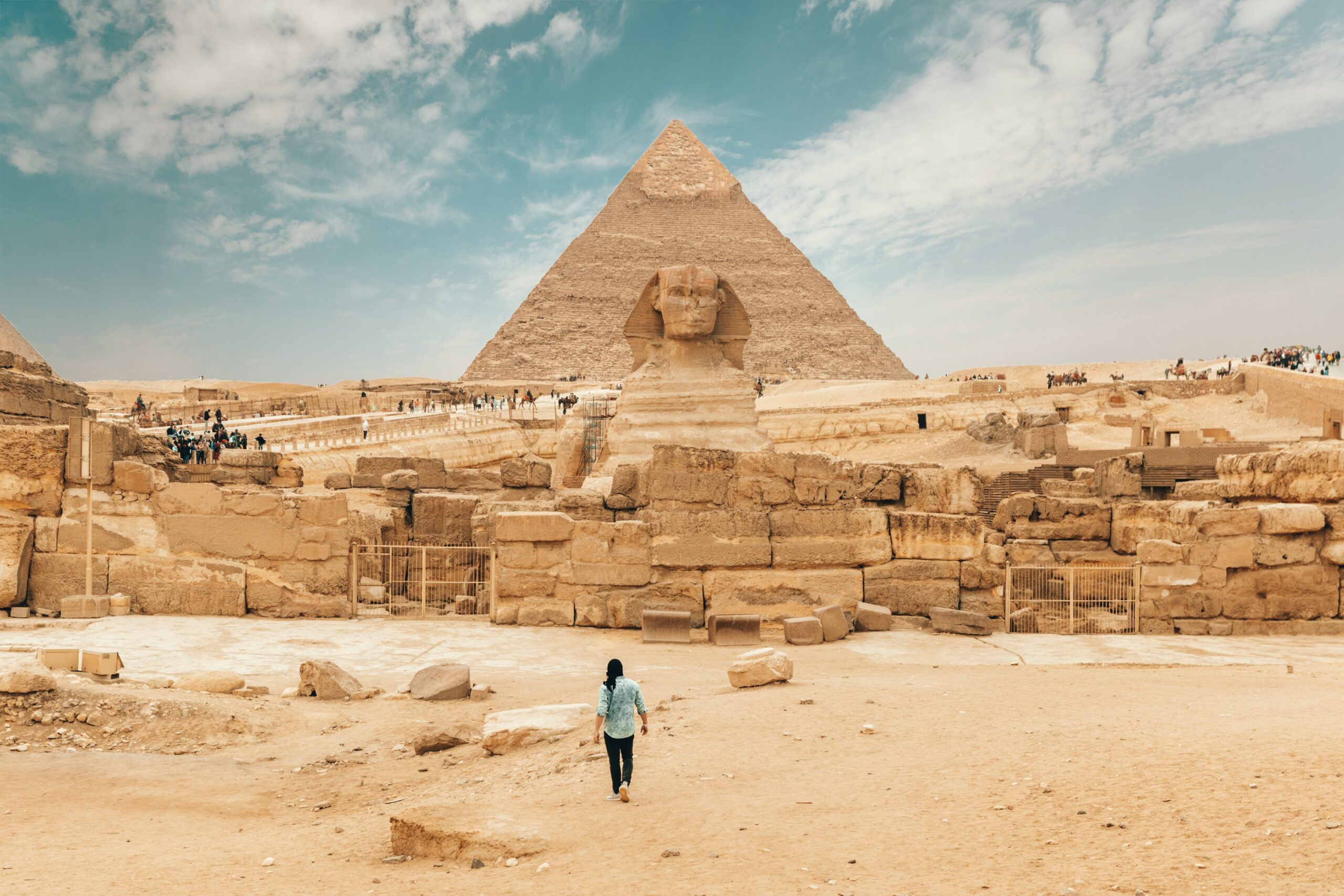Before we start, let’s state the obvious — the most famous tombs in all of Egypt (and probably the world) are the Pyramids of Giza. But ironically, as anyone who’s actually been inside the pyramids knows, the inner burial chambers of the pyramids are kind of… underwhelming. They’re pretty much empty and devoid of the hieroglyphics and ancient Egyptian art that adorns other tombs in the country — and we have no shortage of spectacular ones.
For more Ancient Egypt content, you can read: 9 Different Egyptian Pyramids (That Aren’t the Pyramids of Giza) You Need To See and 12 Most Impressive Ancient Egyptian Temples Still Standing Today
So without further ado, let’s go over some of the best sites in Egypt to see incredible ancient tombs.
1. Valley of the Kings
In the former ancient Egyptian capital of Thebes (now modern-day Luxor in Upper Egypt), is the infamous Valley of the Kings. For a period of 500 years in the New Kingdom (1550 BC – 1069 BC), pharaohs were buried in rock-cut tombs in the Theban Hills, hidden from plain view. 62 tombs have been excavated to present day, with King Tut’s tomb being the most famous (but ironically, not the most impressive). Note: not all the tombs are open to the public, and some are on rotation.
A few of the beautiful tombs in the Valley of the Kings:
-Seti I (KV 17)
-Merenptah (KV 8)
-Ramses IV (KV 2)
2. Valley of the Queens
Nearby to the Valley of the Kings is the Valley of the Queens, where the wives of the pharaohs were buried during the same period. The main valley has 91 tombs discovered to date, and they’re generally smaller than the tombs in the Valley of the Kings.
Most beautiful tomb in the Valley of the Queens:
-Nefertari, the Great Royal Wife of Ramses II (QV 66)
3. Deir el Medina
This necropolis is often overlooked in favor of its more famous neighbors, the Valleys of the Kings and Queens, but you’d be doing yourself a huge disservice by not visiting Deir el Medina while in Luxor. Also known as the Valley of the Artisans, it’s home to the tombs of the artists, builders and craftsmen who worked on the tombs in the Valleys of the Kings and Queens.
Most beautiful tombs in Deir el Medina:
-Pashedu (TT 3)
-Sennedjem (TT 1)
-Khaemteri (TT220)
4. Beni Hassan
A necropolis dedicated to ancient military leaders and provincial rulers, today found in the modern city of Minya in Upper Egypt. There are about 39 tombs dating back to the Middle Kingdom (2050 BC to 1710 BC) cut into the limestone hills in Beni Hassan, but not all of them are open to the public. The ones that are though have beautifully vivid wall paintings, detailing the ancient daily life of the noblemen and governors these tombs belonged to, as well as their compatriots.
Most beautiful tombs in Beni Hassan:
-Tomb of Amenmehat (BH 2)
-Tomb of Khety (BH 17)
5. Tombs of the Nobles at Thebes
Not to be confused with the Tombs of the Nobles at Aswan (Qubbet el Hawa, below), this necropolis is home to the tombs of the nobles and important officials who served the pharaohs during the New Kingdom.
Most beautiful tombs:
-Sennefer (TT 96), also known as ‘Tomb of the Vineyards’
-Rekhmire (TT 100)
6. Mastaba Tombs at Saqqara
The necropolis at Saqqara is home to the famous Step Pyramid of Djoser, the oldest pyramid in Egypt. It’s also where you’ll find the mastaba tombs of government officials and palace workers. Mastabas are ancient Egyptian rectangular tombs with flat roofs made of mud-bricks and limestone.
Most beautiful mastaba tombs:
-Irukaptah (also known as the Tomb of the Butchers)
-Kagemni
-Mehu
7. Qubbet el Hawa
A necropolis of tombs spanning the Old, Middle and New Kingdoms, belonging to Ancient Egyptian officials and nobles. The tombs are on varying levels of a hilltop in Aswan, with a domed tomb of an Islamic sheikh on the very top. It’s still an active excavation site, so who knows what else will be found there in the future. The tombs which are allowed public access rotate.
Most beautiful tombs:
-Harkhuf
-Sarenput II
-Sabni
8. Tell el-Amarna
Tell el-Amarna is the ruins of Akhetaten, the ancient city of Akhenaten. He was known as the ‘heretic king’ who abandoned the traditional Ancient Egyptian religion to worship the one sun god, Aten. He was also the father of Tutankhamun, who left his father’s city to rule in Thebes. To date, tombs from the ancient city still exist in cliffs bordering the city.
Most beautiful tombs in Tell el-Amarna:
-Huya
-Mery-Re I
-Panehsy






